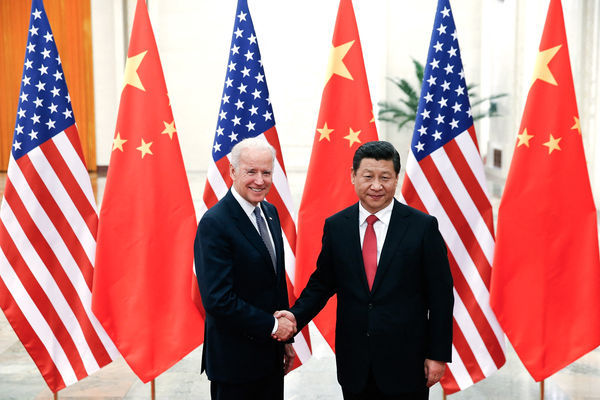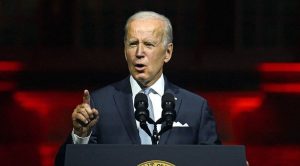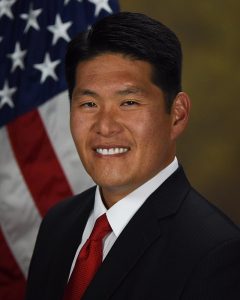In an important essay in the Foreign Affairs journal in March, 2020, the candidate for US President, Joseph Biden had observed that the most effective way to challenge China would be for the USA %u201Cto build a united front of US allies and partners to confront China%u2019s abusive behaviours and human rights violations. To talk to China from a %u201Cposition of strength%u201D, President Biden took two important initiatives recently. First, he decided to upgrade the Quad (a group of Australia, India, Japan and USA) from the Foreign Ministers to the Leaders level and held its virtual meeting quickly on 12 March.
Also Read | How Joe Biden will confront China
Second, President Biden resolved to depute his Secretaries of State, Anthony Blinken and Defence, Llyod Austin to Japan, South Korea and India from March 15 to 20 to ascertain their level of cooperation, scale and willingness to resist China%u2019s aggression before the first USA-China dialogue at Anchorage, Alaska on 18 March.
Choice of Japan as the first stop was deliberate as Japan hosts the biggest US military contingent (its seventh fleet, 7 guided missile destroyers and about 62000 personnel) and is crucial for the US strategic posture towards China in East Asia. USA is hoping that Japan would agree to base its intermediate range missiles (aimed against China). USA Indo-Pacific Coordinator Kurt Campbell had reportedly lobbied with President Biden to choose Japanese PM Suga as the foreign leader to meet him in Washington.
Also Read | How US and China are competing over semiconductors and microchips
China-Japan relations have come under fresh strains after China felt that Japan, disregarding its concerns, was getting too close to the USA. In a sign of displeasure, China despatched its coast guard vessels, which entered Japan%u2019s territorial waters near the Senkaku islands six times, most in a single month since August, 2016. With the Chinese coastguard given power to fire at its adversaries, Japan feared that China might forcibly occupy these islands (like parts of Ladakh in case of India). Japan considered sending its troops to meet China%u2019s Senkaku challenge.
An upset Japanese PM Suga strongly intervened with PM Modi on March 10 to persuade him to accept Quad%u2019s elevation. In the joint statement, Japan pointed finger at China%u2019s erosion of Hong Kong%u2019s autonomy and human right violations in Xinjiang which it had not done previously, indicating its annoyance with China.
Also Read | Anti-China outrage pulls Beijing into Myanmar coup crisis
In the USA-Japan 2+2 dialogue on March 16, US Secretary of State assured his Japanese counterpart that the USA would join Japan in holding joint naval drills near the Senkaku islands, it would pushback China%u2019s coercive and aggressive actions and maintain a competitive edge over China.
Two countries in their joint statement referred to China by name, an unusual practice in diplomatic parlance, calling %u201CChina%u2019s behaviour inconsistent with the existing international order%u201D and it presented %u201Cpolitical, economic, military and technological challenges to the alliance and to the international community%u201D. China%u2019s reaction was equally fierce; it called Japan%u2019s actions %u201Ccontemptible%u201D and accused her of being a %u201Cstrategic vassal%u201D of the USA.
2 plus 2 with South Korea
After Tokyo, the US Secretaries of State and Defence visited Seoul to hold 2+2 dialogue with the South Korean Foreign Minister Chung Eui-yong and Defence Minister, Suh Wook on 17 March. South Korea stopped short of publicising its concerns shared with the US on an aggressive China in the %u201Cfree and open Indo-Pacific%u201D concept (pursued by USA, Japan, India and others) not to unruffle Beijing. China is South Korea%u2019s biggest trade partner, holds considerable sway over its truculent neighbour, North Korea and there are no outstanding security issues between them.
Also Read | Pentagon chief sees Asia ties as deterrent against China
In their joint statement, South Korea agreed to increase the three-way cooperation among the USA, Japan and itself to promote mutually beneficial, forward looking cooperation to promote peace, security, and prosperity in the region including dealing with North Korea
USA-China dialogue at Anchorage
China is despatching its Politburo member and top diplomat, Yang Jiechi with Foreign Minister Wang Yi to Anchorage for a %u201Cstrategic dialogue%u201D with the USA on March 18. Yang has been involved in high-level diplomacy with the US government and had done the groundwork for the Chinese President Xi Jingping%u2019s telephone call with President Biden recently. China had been trying hard to resume high level contacts with the Biden administration to restore its strategic and economic dialogue but could not get clearance from the American side.
On the eve of the meeting, the Biden administration announced fresh sanctions on 24 Chinese officials including Politburo member Wang Chen (who led the new legislative changes on Hongkong curtailing its freedom) and 14 Vice Chairmen of the Standing Committee of China%u2019s National People%u2019s Congress and several senior Hongkong officials for undermining its democratic rights. It is a clear message that the Biden administration will not worry about offending China in public when necessary.
Senior US officials have assured Japan, Australia, India and others that the USA would raise China%u2019s aggressive behaviour towards its allies and partners with Beijing in these talks. These initiatives should send a clear message to China that its hegemony and assertive conduct would only push its neighbours in Asia deeper onto the US side. Beyond a point, they would be willing to sacrifice their economic interests too, as evident in the case of Australia, India and Japan to safeguard their security and territorial integrity. If China persisted on this course, the USA led coalition against her would only get stronger.
#USChinaties #JoeBiden #XiJinping #UnitedStates #China #AnthonyBlinken #LloydAustin #SouthKorea #India






